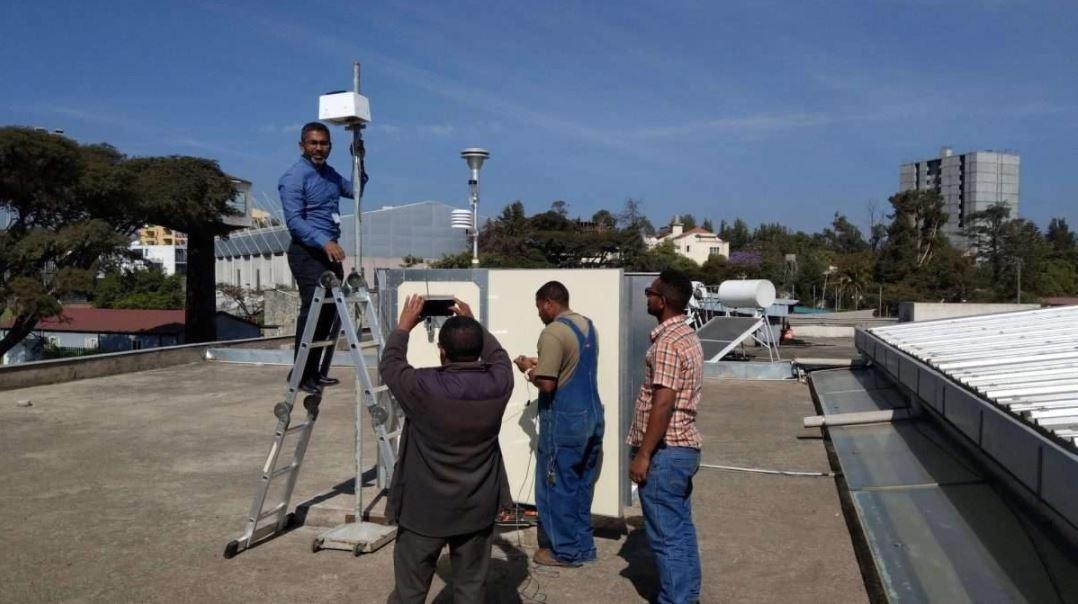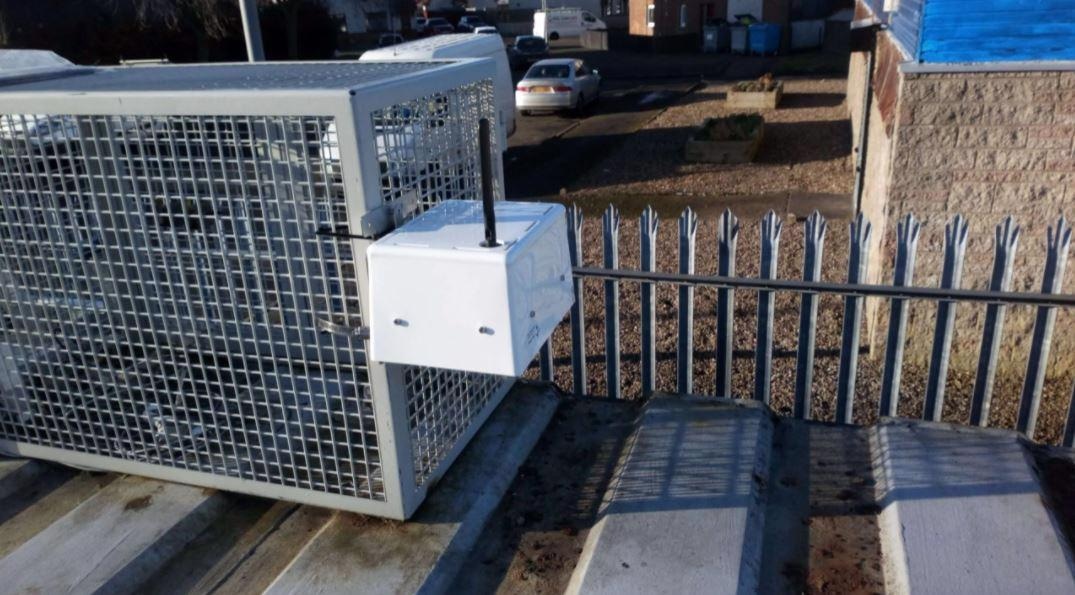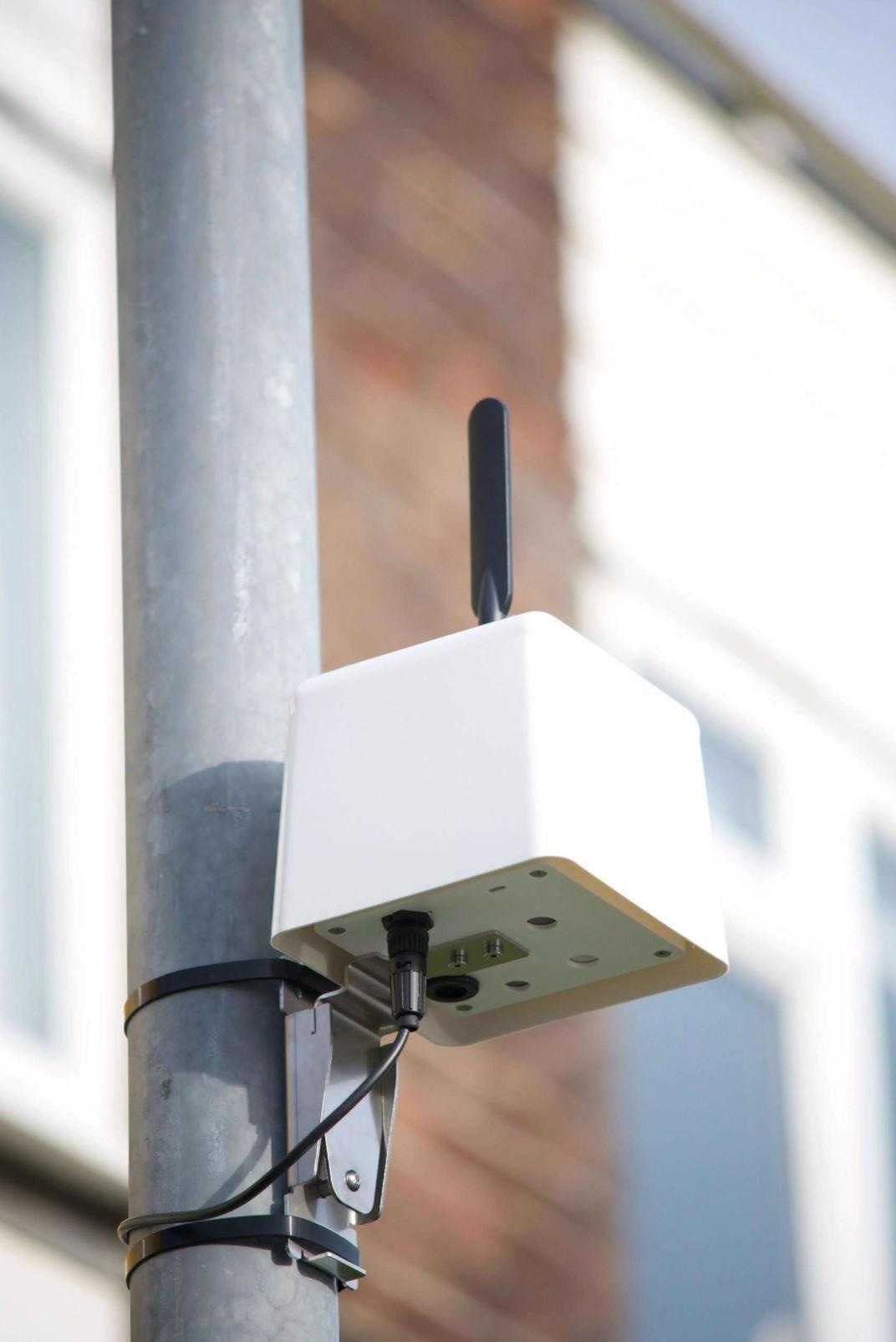I joined South Coast Science (SCS) as Sales Director 18 months ago. I have a background in many different sensor technologies and previously spent five years as a European Sales Manager with Alphasense, an air quality sensor manufacturer.
Alphasense is the ubiquitous supplier to this industry, and this experience set me up well to join my then customer SCS.
At SCS, I am responsible for all things commercial. Much of my time is spent responding to sales inquiries, establishing new distributors, and managing our MCERTS certification process.
Would you please give an overview of SCS, your aims, and what inspired your involvement with environmental monitoring instruments?
SCS was formerly a scientific company working with partners such as the United Nations Environment Program (UNEP), Ricardo Pls, and Cranfield University. When working with UNEP, the task involved developing an air quality monitor for use throughout Africa, capable of withstanding the extremely harsh environment.
Since having met this brief in 2018, we have become more commercially focused.
We are driven to establish a network of distributors worldwide for our products that offer class-leading performance based on innovation."
You were recently featured in the Enabling Innovation Zone at Advanced Engineering. Could you tell our readers what distinguishes SCS from others in the sector?
We have spent more than three years co-locating our instruments with government reference devices, the gold standard in this industry. This process has enabled us to understand the performance of the raw sensor outputs and correct errors due to temperature and humidity effects.
Doing so has been a long process and, to our knowledge, not undertaken by any other manufacturer to the same extent.
It has resulted in massively improved data quality. We can now say that our data output is virtually unaffected by the environment in which a product is used, giving us increased confidence in selling into new markets and regions.

Image Credit: Maridav/Shutterstock.com
Why is air quality monitoring important? Are there any sectors that it is particularly relevant to?
SCS is responding to the dangers of poor air quality and the need to mitigate them. With each breath we take, we inhale microscopic particles that often stay within our bodies.
As more is learned about the damaging effects of air pollution, it is vital that we make it easier to monitor the gasses and particulate matter that may be within our environment."
Most of us working in this industry today didn't grow up with any knowledge of air quality and the massive impact on our health, especially amongst the young and those more vulnerable.
We must now take advantage of our enlightened position to make sure that our children and their children do not make the same mistakes, and we must set them on a course for improved knowledge and cleaner air.
In 2017 South Coast Science partnered with the United Nations Environmental Program (UNEP) to develop Praxis/Urban. Could you tell our readers more about this collaboration?
Here we collaborated with the UN Environment Program and began working on the Paxis/Urban. This was a long-range, scientifically motivated evaluation program that benefitted all South Coast Science products, with rigorous field trials in hostile environments and testing multiple use cases.
We work with the UN to support the implementation of ambient air quality networks globally and develop a platform that encourages the public to replicate and contribute to the open-source air pollution monitor device developed.

Image Credit: South Coast Science
A critical requirement was to ensure that any solution was easy to operate and required minimal local support, necessitating an open design and a software approach that allowed collaboration with others.
This process was designed to stress-test the product scientifically within multiple infrastructures and mechanically in multiple application scenarios. It has resulted in a hugely robust design and has contributed to solving bigger challenges, including integration with customers' products.
UNEP has deployed our products in Ethiopia, Kenya, Monaco, Senegal, and Uganda.
Your products offer a bespoke approach to air quality devices. How do these products work, and what are some advantages to using your air monitoring devices to others commercially available?
Our greatest USP is probably the error correction work, which I spoke about earlier, that has taken several years to perfect. We have also taken design cues from our collaboration with UNEP, for example our open-source data platform which makes it very easy for customers to access their data.
The development of devices to suit different segments of the air quality market is another advantage. Praxis/Urban for air quality surveying and Praxis/OPCube for monitoring at the roadside or within 'smart city' applications are examples.

Praxis/Urban. Image Credit: South Coast Science
Another important element of our product design is their 'fit and forget' nature; this is a necessity in Africa, where products are sometimes deployed in inhospitable terrain. Once products are powered up and have connected to a 4G network, they can be left alone for long periods of time.
Urban air quality monitoring is often featured in media and research, though increased attention has been placed upon indoor air quality.
Have you personally noticed more interest in devices relevant to this application over the course of the ongoing COVID-19 pandemic?
Interest in indoor air quality has certainly spiked over the last eighteen months, but in truth, it goes back further than that.
We have known for several years that poor indoor air quality (IAQ) has a detrimental health effect. Every year millions of work hours are lost due to symptoms caused or exacerbated by poor IAQ.
Questions such as which pollutants are present, at what level, and from where they are generated have all been overlooked until fairly recently. For example, if you want a meaningful measure of IAQ, you need to measure both indoors and also at each of the intakes of the building's HVAC system.
We have been shouting from the rooftops for a while now; if you are going to measure indoors, you must measure outdoors too."
Preferably, at each of the air intakes of the building's HVAC system.
Could you tell us more about South Coast Science's products are designed to provide more accurate, rounded data on environmental conditions?
The UK government's Automatic Urban and Rural Network (AURN) is a network of 275 reference monitors countrywide measuring background air quality.
Reference monitors are very big, costly, and are fixed in position. While they remain the standard against which others are measured, the network offers a poor measurement granularity, leaving enormous geographic gaps that are not representative of any one household, street, or community.
Our products are used to fill those gaps and provide fine-grained air quality data, without interference from temperature and humidity effects and can be used in many different locations to satisfy various measurement campaigns.
Although the accuracy may not be at the reference level, it is sufficiently robust to offer confidence when undertaking more localized measurement or to validate modelling exercises.
However, not all measurement campaigns require a multi-gas approach as NO2 and particulates are often enough to provide researchers with comprehensive traffic modelling data.
The low-cost Praxis/OPCube was introduced this year with this in mind, as well as roadside monitoring and dust measurement applications.

Praxis/OPCube. Image Credit: South Coast Science
Many of the sustainable development goals are focused on climate action and creating more sustainable cities and communities.
Do you believe your products can help achieve some of the solutions set out in sustainable development goals?
The way our instruments can contribute towards cities is through the establishment of air quality baselines in key environments.
Taking baseline measurements at important sites such as hospitals, schools, major road intersections, and other strategic locations is vital in understanding the current scale of the problem. Doing so enables subsequent pollution mitigation strategies to be measured and their effectiveness to be established.
Additionally, local authorities can easily access precision instrumentation and conduct their own self-regulation to understand any impacts on localized air quality.
Are there any challenges that are currently limiting the advancement of air quality instruments?
Currently, there are no European standards or certification for ambient air quality instrumentation although one is expected to arrive within the next year or two.
Until then, we must rely on only a few localized certification schemes, such as the Environmental Agency's 'MCERTS', for certifying instrument performance, a scheme we are pursuing currently.
However, manufactures are not obliged to undertake this certification, leaving customers with little real assurance of what questions to ask about air quality monitoring products.

Image Credit: stockfour/Shutterstock.com
What are the next steps for South Coast Science? Are there any innovations the company is striving towards?
Our work involving sensor modelling will continue in the future. As data is collected from partner's devices deployed around the world, it will be added to the training data set. We use this to understand customer needs and develop new products to meet them.
At the moment, our Praxis/IAQ (Internal Air Quality) is in development; which complements our products for outdoor measurement.
We have been happily tasked with developing a precision IAQ device by a global engineering consultancy, although this need already figured prominently in our pipeline. Eventually, it will become our standard offering for indoor use.
Once this has been completed, we will concentrate our efforts on the Praxis/GasCube, which will target odour monitoring primarily in the wastewater treatment sector.
What aspect of your role do you find to be the most exciting?
Without a doubt, searching for and sounding out prospective new distributors for our products. We now have a good system of identifying the characteristics that make for effective distributors, giving us the confidence that we can work productively and profitably together.
Of course, human traits are important too; it has been an interesting time over the last year or two whereby we have had to develop these relationships remotely rather than in person.
Where can our readers go for more information and stay up to date with South Coast Science's developments?
For the most up to date announcements, please see our LinkedIn page here:
https://www.linkedin.com/company/south-coast-science-limited/
About David Johnson
 David is South Coast Science's Sales Director and has a background in many different sensor technologies. He previously spent five years as a European Sales Manager at Alphasense before beginning his role at SCS 18 months ago.
David is South Coast Science's Sales Director and has a background in many different sensor technologies. He previously spent five years as a European Sales Manager at Alphasense before beginning his role at SCS 18 months ago.
Working with partners worldwide, David helps to develop air quality solutions for a range of environments and purposes.
Disclaimer: The views expressed here are those of the interviewee and do not necessarily represent the views of AZoM.com Limited (T/A) AZoNetwork, the owner and operator of this website. This disclaimer forms part of the Terms and Conditions of use of this website.